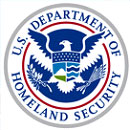Statement by Secretary Jeh C. Johnson on U. S. Airport Security Enhancements

April 20, 2015 - Department of Homeland Security
Today, I am announcing that the Transportation Security Administration (TSA) will take additional steps to address the potential insider threat vulnerability at U.S. airports. These steps follow a 90-day Aviation Security Advisory Committee (ASAC) comprehensive review conducted at my request in January 2015. I also asked the ASAC to identify other trends to determine if additional risk-based security measures, resource reallocations, new investments or policy changes are necessary.
I made this request after an incident in Atlanta that occurred in December 2014 which raised questions about potential vulnerabilities regarding the screening and vetting of all airport-based employees. Immediately following the incident in December 2014, TSA increased the random and unpredictable screening of aviation workers at various airport access points to mitigate potential security vulnerabilities.
As a result of the recommendations contained in the ASAC report, I have directed the TSA to take the following immediate actions:
1. Until TSA establishes a system for “real time recurrent” criminal history background checks for all aviation workers, require fingerprint-based Criminal History Records Checks every two years for all airport employee SIDA badge holders.
2. Require airport and airline employees traveling as passengers to be screened by TSA prior to travel.
3. Require airports to reduce the number of access points to secured areas to an operational minimum.
4. Increase aviation employee screening, to include additional randomization screening throughout the workday.
5. Re-emphasize and leverage the Department of Homeland Security “If You See Something, Say Something™” initiative to improve situational awareness and encourage detection and reporting of threat activity.
I have also directed TSA to continue analyzing the recommendations of the ASAC report, and identify additional mitigating measures for future implementation.
Furthermore, the ASAC concluded that 100 percent physical employee screening would not completely eliminate potential risks, but would divert critical resources from other critical security functions to mitigate other risks.
I want to thank the ASAC for their work in developing their recommendations in such a short time frame. Their recommendations validate TSA’s risk-based approach to passenger screening and will help strengthen the overall security of our commercial aviation network. I am confident that the potential insider-threat posed by aviation industry employees will be significantly mitigated as a result of these recommendations. The Aviation Security Advisory Committee review can be read here.
Established in 1989 in the wake of the crash of Pan Am 103 over Lockerbie, Scotland, the ASAC provides advice and recommendations for improving aviation security measures to the Administrator of TSA.
The ASAC is composed of members representing nine key stakeholder groups affected by aviation security requirements. These membership categories include victims of terrorist acts against aviation, law enforcement and security experts, aviation consumer advocates, airport tenants and general aviation, airport operators, airline management, airline labor, aircraft and security equipment manufacturers, and air cargo.
ASAC’s mission is to examine areas of civil aviation security and develop recommendations for the improvement of civil aviation security methods, equipment, and procedures.
The ASAC enhances TSA’s security posture through consultation with key partners concerning potential risks to infrastructure, passengers and cargo. In addition, ASAC gathers input from stakeholders on the effectiveness of security procedures and develops recommendations for possible improvements. Members serve up to two-year terms from the date of the appointment.






